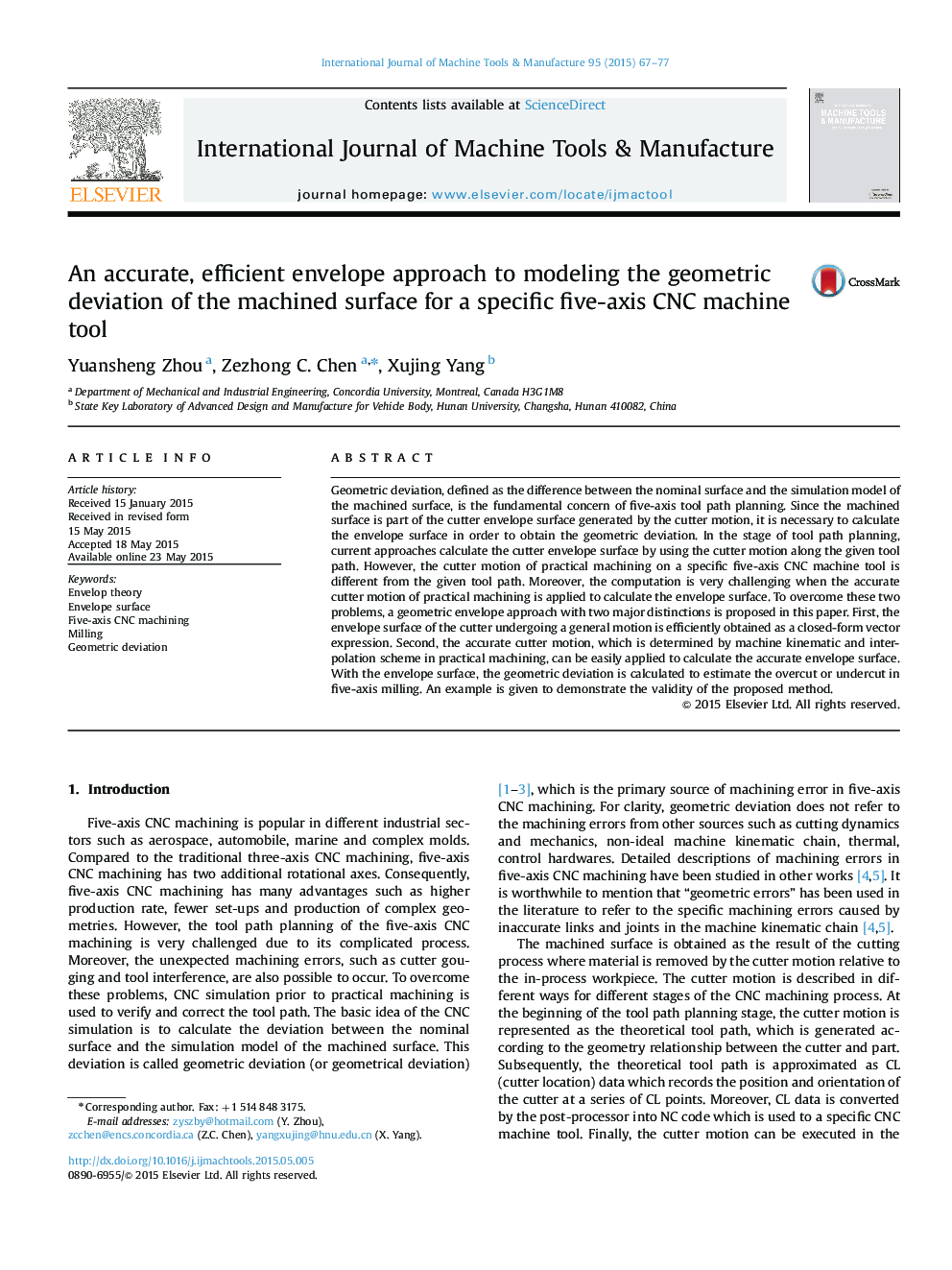| Article ID | Journal | Published Year | Pages | File Type |
|---|---|---|---|---|
| 780680 | International Journal of Machine Tools and Manufacture | 2015 | 11 Pages |
•The geometric envelope approach is used to efficiently obtain the closed-form result for the specific circular surface.•The accurate envelope surface model is calculated based on the accurate tool motion.•The accurate maximum geometric deviation is computed with the consideration of the boundary condition in five-axis milling.
Geometric deviation, defined as the difference between the nominal surface and the simulation model of the machined surface, is the fundamental concern of five-axis tool path planning. Since the machined surface is part of the cutter envelope surface generated by the cutter motion, it is necessary to calculate the envelope surface in order to obtain the geometric deviation. In the stage of tool path planning, current approaches calculate the cutter envelope surface by using the cutter motion along the given tool path. However, the cutter motion of practical machining on a specific five-axis CNC machine tool is different from the given tool path. Moreover, the computation is very challenging when the accurate cutter motion of practical machining is applied to calculate the envelope surface. To overcome these two problems, a geometric envelope approach with two major distinctions is proposed in this paper. First, the envelope surface of the cutter undergoing a general motion is efficiently obtained as a closed-form vector expression. Second, the accurate cutter motion, which is determined by machine kinematic and interpolation scheme in practical machining, can be easily applied to calculate the accurate envelope surface. With the envelope surface, the geometric deviation is calculated to estimate the overcut or undercut in five-axis milling. An example is given to demonstrate the validity of the proposed method.
